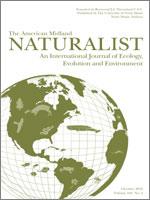Evaluating the progress of ecological restoration projects is critical to improving our understanding of degraded ecosystems and their rehabilitation. In a remnant tallgrass prairie in southeast Michigan that is being managed by periodic dormant-season burns to reduce exotic species and increase native diversity, we tracked plant community changes in seven management units over a period of 16 y to evaluate ecological trajectory in the context of restoration goals. Factors that influenced compositional change from year to year were also assessed. We found that fire frequency, growing season temperature and growing season precipitation were correlated with the magnitude of year-to-year compositional change. Over the 16 y period, most management units decreased sharply in exotic species richness and abundance but did not increase appreciably in native species richness. Also, species evenness and native species abundance increased while total species richness decreased in most units. Over both spatial and temporal scales, the native C4 grass Andropogon gerardii (big bluestem) was negatively correlated with species richness, likely because of competitive pressure from A. gerardii. Moreover, the direction of ecological trajectory, which diverged among management units over time, was related to differences in the abundance of A. gerardii across the prairie. Ultimately, we concluded that although frequent fire was effective at maintaining prairie species and reducing exotic species, using fire as the only restoration tool was not effective at achieving a species-diverse prairie community.
How to translate text using browser tools
1 October 2010
Assessing Plant Community Changes Over Sixteen Years of Restoration in a Remnant Michigan Tallgrass Prairie
Justin L. Heslinga,
Robert E. Grese
ACCESS THE FULL ARTICLE
It is not available for individual sale.
This article is only available to subscribers.
It is not available for individual sale.
It is not available for individual sale.





